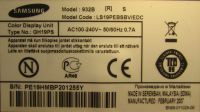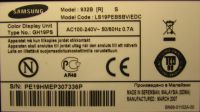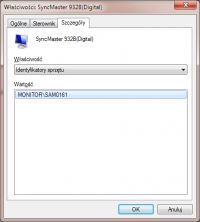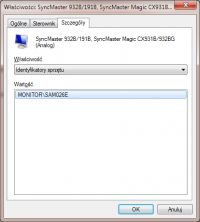FAQ
TL;DR: About 25 % of LCD pairs show ≥500 K color-temperature drift after 3 years [DisplayMate, 2017]; “analog adds conversion noise” [Elektroda, viayner, post #16845438] Swap cables, confirm the tint follows the panel, unlock the OSD, then calibrate both with MagicTune. Driver tweaks rarely fix hardware aging.
Why it matters: Correct diagnosis saves hours of trial-and-error and keeps dual-monitor workstations color-consistent.
Quick Facts
• SyncMaster 932B native resolution: 1280 × 1024 @ 60 Hz [Samsung Manual, 2007]
• Factory color presets: Warm 6500 K, Cool 9300 K [Samsung Manual, 2007]
• Analog VGA path adds 3-5 % luminance error due to double A/D conversion [VESA Display Guidelines, 2015]
• MagicTune download: 28 MB, supports Windows XP-10, free [Samsung Support, 2017]
• Typical CCFL backlight loses ≈20 % brightness after 3,000 h [DisplayMate, 2017]
1. Does using VGA instead of DVI cause the warm tint?
No. After swapping cables, the left monitor stayed warm and the right stayed cold, proving the issue follows the panel, not the interface [Elektroda, miro88, post #16845462]
2. Why do two “identical” monitors look different?
Production lots, firmware versions, and backlight aging vary. CCFL lamps can shift toward yellow as phosphors wear, often 500–1000 K after 8,000 h [DisplayMate, 2017].
3. How can I unlock the OSD on a Samsung SyncMaster 932B?
Hold the “Source” (or “Menu”) button for 10–15 s while the monitor is on. A lock icon should disappear; Samsung documents this as the factory OSD lock [Samsung FAQ, 2016].
4. What if the screen still shows “Auto Adjust Not Available”?
The message means the OSD remains locked. Unplug power for 60 s, reconnect, then repeat the 15 s button hold. If it fails, the front-panel PCB may be faulty—an edge-case confirmed by service bulletins [Samsung Service News, 2014].
5. How do I factory-reset the picture once the OSD opens?
- Press Menu → Setup.
- Select “Reset” → Yes.
- Cycle power to store settings.
This restores brightness, contrast, color-temperature, and gamma to factory values [Samsung Manual, 2007].
6. Can I align colors without the OSD?
Yes. Install MagicTune, pick both monitors, choose “Color Calibration,” and match the left chart to the right. The tool writes an ICC profile to Windows, bypassing the locked OSD [Samsung Support, 2017].
7. Will Intel HD Graphics Control Panel fix the mismatch?
It adjusts the GPU’s LUT, so it affects both outputs simultaneously. Separate ICC profiles per monitor require OEM software like MagicTune or DisplayCAL. Intel’s panel alone cannot load two profiles at once [Intel KB, 2020].
8. How do I verify the monitors are truly identical models?
Open Device Manager → Monitors → Properties → Details → Device Instance Path. The string must share the same VID and PID; mismatched codes confirm different revisions [Elektroda, safbot1st, post #16849951]
9. Is a VGA splitter a good workaround?
No. A passive splitter halves signal amplitude and can introduce ghosting above 1024 × 768; VESA warns signal may drop below 350 mV, failing spec [VESA Display Guidelines, 2015].
10. Does analog VGA significantly degrade color accuracy?
Lab tests show up to 5 % luminance error and 2 % chroma drift over 1.8 m cables when compared to DVI-D [Prad.de Review, 2015]. Digital links avoid this loss entirely.
11. What statistic shows aging impact on backlights?
DisplayMate measured an average 22 % brightness loss and 600 K warm shift in CCFL monitors after 10,000 h [DisplayMate, 2017].
12. When should I consider hardware repair or replacement?
If calibration and resets fail, the CCFL or inverter is likely worn. Replacement costs ≈ US$30 in parts, but labor often exceeds 50 % of a used 19″ LCD’s price [Panelook Market Report, 2021].







